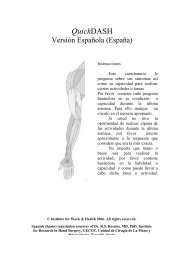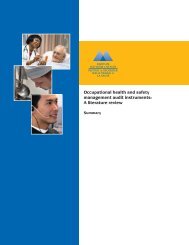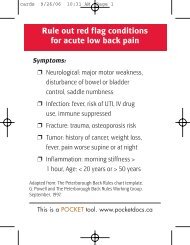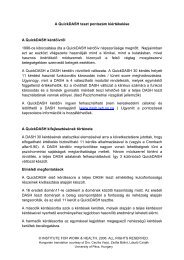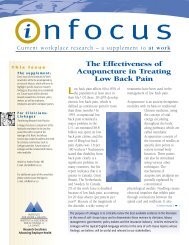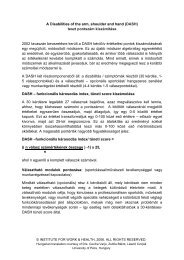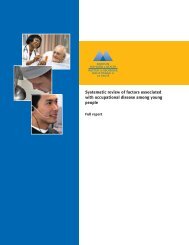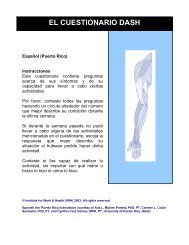A systematic review of injury/illness prevention and loss control ...
A systematic review of injury/illness prevention and loss control ...
A systematic review of injury/illness prevention and loss control ...
- No tags were found...
Create successful ePaper yourself
Turn your PDF publications into a flip-book with our unique Google optimized e-Paper software.
publish the results <strong>of</strong> the <strong>review</strong> in the resources identified by stakeholders(i.e. Pr<strong>of</strong>essional Safety, Accident Prevention, IWH website).The stakeholders reported that clinical outcomes <strong>and</strong> measures required byregulation (e.g. OSHA logs, workers’ compensation claims) were moremeaningful to them than employee self-reports <strong>of</strong> symptoms. Theinformation they wanted the <strong>review</strong> to provide was, “What was the mosteffective IPC program?”, “What doesn’t work?” <strong>and</strong> “What is the most costeffectiveprogram?” The stakeholders also asked for the results to bepresented in a tiered manner. This approach would link the program'seffectiveness with the amount <strong>of</strong> time it took to experience the benefits(reduction in injuries, <strong>illness</strong>es or claims). The team made an explicit decisionnot to collect data on cost benefit. The only costs that were included relatedto reporting workers’ compensation information. The team believedeconomic evaluations <strong>of</strong> programs was an issue related to, but not covered by,the stated questions. In addition, another <strong>systematic</strong> <strong>review</strong> describing theeconomic evaluation <strong>of</strong> programs has recently been completed (9).2.2 Literature SearchSearch terms were identified in three broad areas defined earlier in thissection: <strong>injury</strong>/<strong>illness</strong> <strong>prevention</strong> <strong>and</strong> <strong>loss</strong> <strong>control</strong> (IPC) programs, worker orwork setting <strong>and</strong> <strong>injury</strong>/<strong>illness</strong> outcome terms. Search terms are listed inAppendix D. The specific search terms used were decided by groupconsensus <strong>and</strong> stakeholder input. The search categories were chosen to beinclusive (IPC <strong>and</strong> work setting terms) <strong>and</strong> to be exclusive (<strong>injury</strong> outcometerms). The search strategy is graphically represented by the Venn diagram inFigure 2.The <strong>review</strong> team members were asked to assemble a list <strong>of</strong> articles from theirpersonal libraries that were expected to be captured in the literature search(“must-have” articles). The combined lists were used as a preliminary check<strong>of</strong> the search’s face validity. “Must-have” articles identified by the team arelisted in Appendix E. The search would be considered invalid if the groupdetermined the search did not capture the identified relevant articles. Thegroup would then examine the search terms to determine reasons for articleomission. The literature search was completed using the extended keywordlist to ensure capture <strong>of</strong> relevant articles. The Level 1 <strong>review</strong> began after thesearch was considered valid.A list <strong>of</strong> terms was generated a priori that were expected to identify articlesthat were not relevant to the <strong>review</strong> questions by bringing in non-workplaceliterature. The suspect terms were used in multiple fields <strong>and</strong> had diversemeanings. The team agreed on terms that should be tested in the search todetermine what impact they had on the number <strong>of</strong> identified articles. The“stepped” search is a valuable component <strong>of</strong> describing the literature <strong>and</strong>helps identify topic areas for future <strong>systematic</strong> <strong>review</strong>s.A <strong>systematic</strong> <strong>review</strong> <strong>of</strong> <strong>injury</strong>/<strong>illness</strong> <strong>prevention</strong> <strong>and</strong> <strong>loss</strong> <strong>control</strong>programs (IPCs)11



